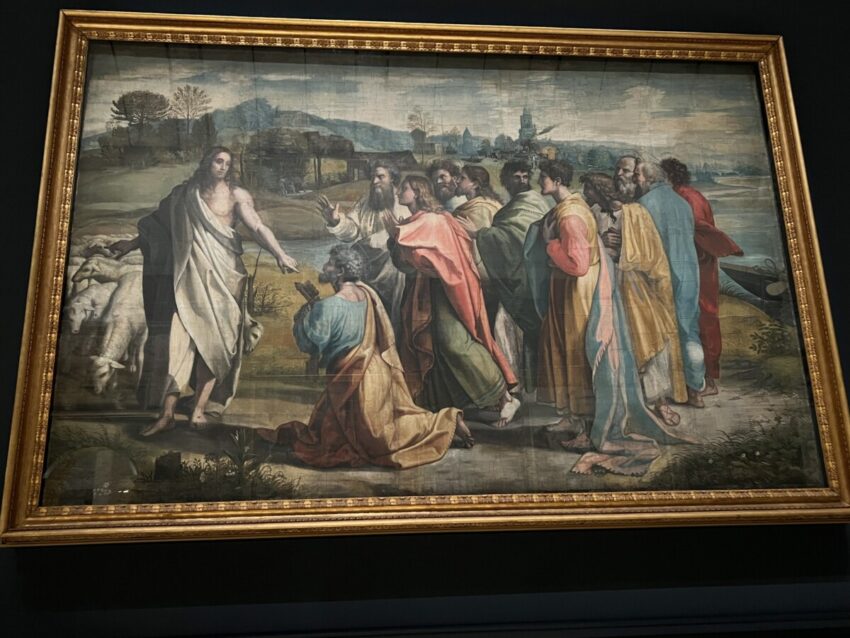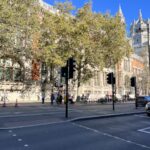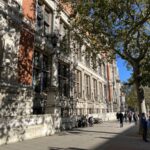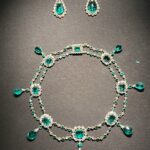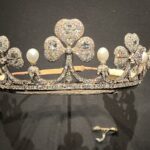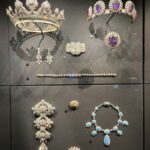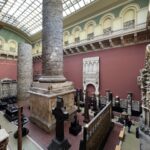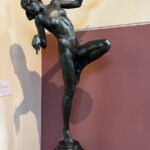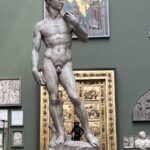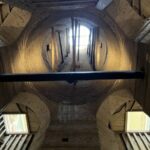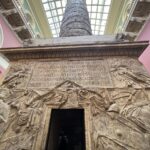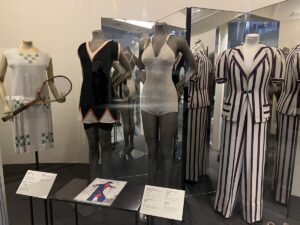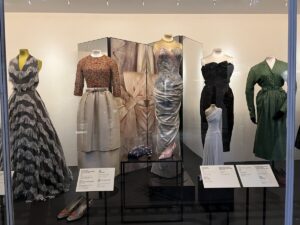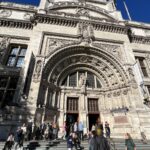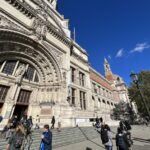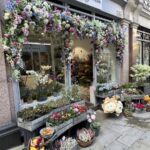A lovely sunny day in London, and I’m heading to the Victoria and Albert Museum in Kensington with my son Ben. The surrounding area is full of old stylish buildings and it is really busy with a great vibe.
The Victoria and Albert Museum is the world’s largest museum of applied arts, decorative arts and design, housing a permanent collection of over 2.27 million objects. It was founded in 1852 and named after Queen Victoria and Prince Albert.
We strolled through the sculptures. I loved this gold sculpture as it was a bit different and more contemporary, and represented current day life. Then on to the Jewellery room. The necklace and earrings pictured below were probably made by Nitot et fils. Emeralds and brilliant-cut diamonds, open-set in gold and silver; briolette-cut emerald drops. Part of a suite presented by Emperor Napoleon 1 to his adopted daughter Stephanie de Beauharnais on her marriage in 1806 to the heir of the Grand Duke of Baden!
The Dufferin Tiara pictured below is made of gold, silver, diamonds and pearls. The brooch fitting enabled one of the shamrocks to be worn separately. Made for Hariot (1843-1936), wife of Frederick, 1st Marquess of Dufferin and Ava, Governor General of Canada and Viceroy of India. According to George I of Greece, ‘There was no lady in Europe who could enter a room like Lady Dufferin’. The tiara was worn at many grand events, including State Openings of Parliament and the Coronation of King George VI in 1937.
The Londonderry jewels are one of the finest surviving collections of aristocratic jewellery in Britain. Their origin lies in the Down diamonds, acquired in India in the 18th century. The first Marquess of Londonderry inherited these diamonds and his successor, the 2nd Marquess, better known as Viscount castlereagh, added to the collection. Castlereagh was Foreign Secretary from 1812 to 1822.
The Cast Courts (originally called the Architectural Courts) of the Victoria and Albert Museum in London, England, comprise two large halls. Opened in 1873, the Cast Courts display copies of some of the world’s most significant works of art reproduced in plaster, electrotype, photography, and digital media. The magnificent plaster cast of Trajan’s Column is one of the stars of the V&A collection, and has towered over the cast collection in two halves since the opening of the Courts in 1873. A monumental feat of moulding, electrotyping, casting and engineering, the column perfectly demonstrates the complexity and skill of copying in the 19th century.
Spanning five centuries, the fashion collection in the V & A is the largest and most comprehensive collection of dress in the world. Key items in the collection include rare 17th century gowns, 18th century ‘mantua’ dresses, 1930s evening wear, 1960s daywear and post-war couture as depicted in the photos above.
And then are household items through the ages as depicted in the photos blow!!
The painting by Raphael (1483-1520) of Christ’s Charge to Peter, which is the feature picture on this post, is in the section of the V & A called the Raphael Cartoons which are a set of seven full-scale designs for tapestry painted by Raphael, and are considered one of the greatest treasures of the Renaissance. They were commissioned in 1515 by Pope Leo X for the Vatican’s Sistine Chapel and depict the lives of the apostles Saint Peter and Saint Paul. The Cartoons have been on loan to the V&A from His Majesty The King since 1865.
We finished the day strolling down to Sloane Square and surrounding area. We walked up Pavilion Road which was full of lively restaurants and old fashioned food shops, including this amazing cheese shop. Here we stopped for a late lunch at Ottolenghi delhi. The food was so yummy. Beautiful fresh salads and corn fritters!! Great day.

